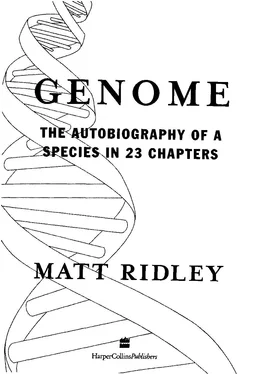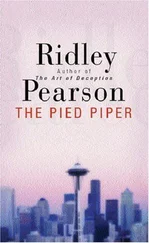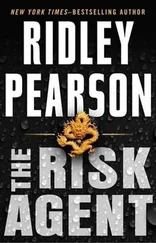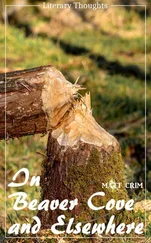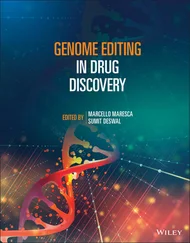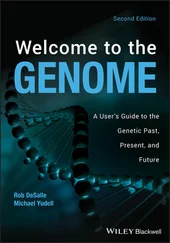Genome - Matt Ridley
Здесь есть возможность читать онлайн «Genome - Matt Ridley» — ознакомительный отрывок электронной книги совершенно бесплатно, а после прочтения отрывка купить полную версию. В некоторых случаях можно слушать аудио, скачать через торрент в формате fb2 и присутствует краткое содержание. Жанр: Старинная литература, на английском языке. Описание произведения, (предисловие) а так же отзывы посетителей доступны на портале библиотеки ЛибКат.
- Название:Matt Ridley
- Автор:
- Жанр:
- Год:неизвестен
- ISBN:нет данных
- Рейтинг книги:5 / 5. Голосов: 1
-
Избранное:Добавить в избранное
- Отзывы:
-
Ваша оценка:
- 100
- 1
- 2
- 3
- 4
- 5
Matt Ridley: краткое содержание, описание и аннотация
Предлагаем к чтению аннотацию, описание, краткое содержание или предисловие (зависит от того, что написал сам автор книги «Matt Ridley»). Если вы не нашли необходимую информацию о книге — напишите в комментариях, мы постараемся отыскать её.
Matt Ridley — читать онлайн ознакомительный отрывок
Ниже представлен текст книги, разбитый по страницам. Система сохранения места последней прочитанной страницы, позволяет с удобством читать онлайн бесплатно книгу «Matt Ridley», без необходимости каждый раз заново искать на чём Вы остановились. Поставьте закладку, и сможете в любой момент перейти на страницу, на которой закончили чтение.
Интервал:
Закладка:
summarising what is known about each gene and links to other relevant websites: bioinformatics.weizmann.ac.il/cards.
But these websites give only summaries of knowledge and they are not for the faint-hearted: there is much jargon and assumed knowledge, which will defeat many amateurs. They also concentrate on the relevance of each gene for inherited disorders, thus compounding the problem that I have tried to combat in this book: the impression that the main function of genes is to cause diseases.
B I B L I O G R A P H Y A N D N O T E S 3 1 5
I have relied heavily on textbooks, therefore, to supplement and explain the latest knowledge. Some of the best are Tom Strachan and Andrew Read's Human molecular genetics (Bios Scientific Publishers, 1996), Robert Weaver and Philip Hedrick's Basic genetics (William C. Brown, 1995), David Micklos and Greg Freyer's DNA science (Cold Spring Harbor Laboratory Press, 1990) and Benjamin Lewin's Genes VI (Oxford University Press, 1997).
As for more popular books about the genome in general, I recommend Christopher Wills's Exons, introns and talking genes (Oxford University Press, 1991), Walter Bodmer and Robin McKie's The book of man (Little, Brown, 1994) and Steve Jones's The language of the genes (Harper Collins, 1993). Also Tom Strachan's The human genome (Bios, 1992). All of these are inevitably showing their age, though.
In each chapter of this book, I have usually relied on one or two main sources, plus a variety of individual scientific papers. The notes that follow are intended to direct the interested reader, who wishes to follow up the subjects, to these sources.
C H R O M O S O M E I
The idea that the gene and indeed life itself consists of digital information is found in Richard Dawkins's River out of Eden (Weidenfeld and Nicolson, 1995) and in Jeremy Campbell's Grammatical man (Allen Lane, 1983). An excellent account of the debates that still rage about the origin of life is found in Paul Davies's The fifth miracle (Penguin, 1998). For more detailed information on the RNA world, see Gesteland, R. F. and Atkins, J. F. (eds) (1993). The RNA world. Cold Spring Harbor Laboratory Press, Cold Spring Harbor, New York.
1. Darwin, E. (1794). Zoonomia: or the laws of organic life. Vol. II, p. 244. Third edition (1801). J. Johnson, London.
2. Campbell, J. (1983). Grammatical man: information, entropy, language and life.
Allen Lane, London.
3. Schrodinger, E. (1967). What is life? Mind and matter. Cambridge University Press, Cambridge.
4. Quoted in Judson, H. F. (1979). The eighth day of creation. Jonathan Cape, London.
3 1 6 G E N O M E
5. Hodges, A. (1997). Turing. Phoenix, London.
6. Campbell, J. (1983). Grammatical man: information, entropy, language and life.
Allen Lane, London.
7. Joyce, G. F. (1989). RNA evolution and the origins of life. Nature 338: 217-24; Unrau, P. J. and Bartel, D. P. (1998). RNA-catalysed nucleotide synthesis. Nature 395: 260—63.
8. Gesteland, R. F. and Atkins, J. F. (eds) (1993). The RNA world. Cold Spring Harbor Laboratory Press, Cold Spring Harbor, New York.
9. Gold, T. (1992). The deep, hot biosphere. Proceedings of the National Academy of Sciences of the USA 89: 6045—49; Gold, T. (1997). An unexplored habitat for life in the universe? American Scientist 85: 408—11.
10. Woese, C. (1998). The universal ancestor. Proceedings of the National Academy of Sciences of the USA 95: 6854—9.
11. Poole, A. M., Jeffares, D.C and Penny, D. (1998). The path from the RNA world. Journal of Molecular Evolution 46: 1 —17; Jeffares, D. C, Poole, A. M. and Penny, D. (1998). Relics from the RNA world. Journal of 'Molecular Evolution 46: 18—36.
C H R O M O S O M E 2
The story of human evolution from an ape ancestor has been told and retold many times. Good recent accounts include: N. T. Boa2's Eco homo (Basic Books, 1997), Alan Walker and Pat Shipman's The wisdom of bones (Phoenix, 1996), Richard Leakey and Roger Lewin's Origins reconsidered (Little, Brown, 1992) and Don Johanson and Blake Edgar's magnificently illustrated From Lucy to language (Weidenfeld and Nicolson, 1996).
1. Kottler, M.J. (1974). From 48 to 46: cytological technique, preconception, and the counting of human chromosomes. Bulletin of the History of Medicine 48: 465 — 502.
2. Young, J. Z. (1950). The life of vertebrates. Oxford University Press, Oxford.
3. Arnason, U., Gullberg, A. and Janke, A. (1998). Molecular timing of primate divergences as estimated by two non-primate calibration points.
Journal of Molecular Evolution 47: 718—27.
4. Huxley, T. H. (1863/1901). Man's place in nature and other anthropological essays, p. 153. Macmillan, London.
B I B L I O G R A P H Y A N D N O T E S 3 1 7
5. Rogers, A. and Jorde, R. B. (1995). Genetic evidence and modern human origins. Human Biology 67: 1—36.
6. Boaz, N. T. (1997). Eco homo. Basic Books, New York.
7. Walker, A. and Shipman, P. (1996). The wisdom of bones. Phoenix, London.
8. Ridley, M. (1996). The origins of virtue. Viking, London.
C H R O M O S O M E 3
There are many accounts of the history of genetics, of which the best is Horace Judson's The eighth day of creation (Jonathan Cape, London, 1979; reprinted by Penguin, 1995). A good account of Mendel's life is found in a novel by Simon Mawer: Mendel's dwarf (Doubleday, 1997).
1. Beam, A. G. and Miller, E. D. (1979). Archibald Garrod and the development of the concept of inborn errors of metabolism. Bulletin of the History of Medicine 53: 315—28; Childs, B. (1970). Sir Archibald Garrod's conception of chemical individuality: a modern appreciation. New England Journal of Medicine 282: 71—7; Garrod, A. (1909). Inborn errors of metabolism. Oxford University Press, Oxford.
2. Mendel, G. (1865). Versuche uber Pflanzen-Hybriden. Verhandlungen des naturforschenden Vereines in Brunn 4: 3—47. English translation published in the Journal of 'the Royal Horticultural Society, V ol. 26 (1901).
3. Quoted in Fisher, R. A. (1930). The genetical theory of natural selection. Oxford University Press, Oxford.
4. Bateson, W. (1909). Mendel's principles of heredity. Cambridge University Press, Cambridge.
5. Miescher is quoted in Bodmer, W. and McKie, R. (1994). The book of man.
Little, Brown, London.
6. Dawkins, R. (1995). River out of Eden. Weidenfeld and Nicolson, London.
7. Hayes, B. (1998). The invention of the genetic code. American Scientist 86: 8-14.
8. Scazzocchio, C. (1997). Alkaptonuria: from humans to moulds and back.
Trends in Genetics 13: 125-7; Fernandez-Canon, J. M. and Penalva, M. A.
(1995). Homogentisate dioxygenase gene cloned in Aspergillus. Proceedings of the National Academy of Sciences of the USA 92: 9132-6.
3 I 8 G E N O M E
C H R O M O S O M E 4
For those concerned about inherited disorders such as Huntington's disease, the writings of Nancy and Alice Wexler, detailed in the notes below, are essential reading. Stephen Thomas's Genetic risk (Pelican, 1986) is a very accessible guide.
1. Thomas, S. (1986). Genetic risk. Pelican, London.
2. Gusella, J. F., McNeil, S., Persichetti, F., Srinidhi, J., Novelletto, A., Bird, E., Faber, P., Vonsattel, J . P . , Myers, R. H. and MacDonald, M. E. (1996).
Читать дальшеИнтервал:
Закладка:
Похожие книги на «Matt Ridley»
Представляем Вашему вниманию похожие книги на «Matt Ridley» списком для выбора. Мы отобрали схожую по названию и смыслу литературу в надежде предоставить читателям больше вариантов отыскать новые, интересные, ещё непрочитанные произведения.
Обсуждение, отзывы о книге «Matt Ridley» и просто собственные мнения читателей. Оставьте ваши комментарии, напишите, что Вы думаете о произведении, его смысле или главных героях. Укажите что конкретно понравилось, а что нет, и почему Вы так считаете.
